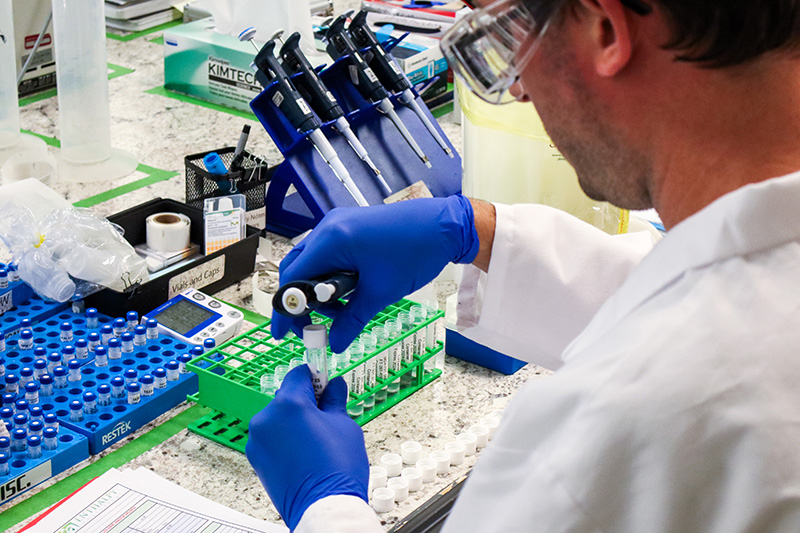Safeguarding the Future: How Pender County Took on PFAS Contamination
Pender County, North Carolina, a scenic coastal region home to approximately 70,000 residents, relies on the Cape Fear River as a vital water source. Industrial pollution from upstream facilities had released harmful substances into the river. The wake-up call came in 2017, when GenX—a type of PFAS (per- and polyfluoroalkyl substance)—was detected in the water supply, sparking regional alarm.
Residents in nearby Wilmington voiced outrage, demanding action, and the crisis made national headlines. While initial testing suggested that Pender County's water contained lower levels of PFAS than neighboring areas', officials knew they couldn't afford to be complacent. The county faced a critical decision: wait for the issue to reach crisis levels or proactively safeguard their community's water for the future.
Determined to protect their community, Pender County launched an ambitious initiative to confront the crisis head-on. They sought to measure and monitor the presence of PFAS, identify the most effective treatment solutions, and ensure compliance with evolving regulations. However, they faced an uphill battle with financial constraints, logistical hurdles, and the sheer complexity of eradicating these persistent contaminants. They needed a partner with deep expertise—one that could navigate the intricate science and evolving policies surrounding PFAS. That's when they turned to Montrose Environmental Group.
The Science of Safe Water
Montrose was no stranger to the challenge at hand. With years of experience in testing and treating PFAS, a coast-to-coast network of industry-leading laboratories, and a strong presence in North Carolina, we were uniquely positioned to help. From the moment we joined forces with Pender County in 2018, Montrose became a vital partner in helping the county create a plan for safe drinking water and contaminant-free wastewater.
Their first step was to establish a clear baseline. Through years of rigorous sampling, our lab team mapped out the extent of PFAS contamination. With our local presence, Montrose alleviated the operational burden on county staff by handling sample collection directly and expediting analysis turnaround time. After six years of translating complex data into actionable insights, Montrose armed Pender County with the scientific insights they needed to develop an action plan that would safeguard public health and sustain wildlife ecosystems for years to come.
Building Resilience for the Future
Since 2012, the Pender County Surface Water Treatment Plant has employed an advanced filtration system, marking a significant milestone in the region's commitment to water purity. Over the years, granular activated carbon (GAC) filters, working in tandem with primary anthracite filters, have played a crucial role in dramatically reducing PFAS levels. This pioneering effort has not only safeguarded the county's water supply but also cemented Pender County's legacy as a forerunner in water quality management.
The partnership with Montrose led to a series of crucial victories. Pender County established an extensive water quality monitoring program, providing a clear and continuous assessment of contamination levels. With insights backed by Montrose's lab team, the county created a long-term plan to treat its drinking water and wastewater and secured funding for a state-of-the-art, multi-million-dollar membrane water treatment facility slated for completion by 2028. More than just a one-time fix, the county developed an enduring compliance framework, ensuring that future generations and natural habitats surrounding Pender County would continue to benefit from clean, safe drinking water and wastewater.
As a continued effort, Pender County Utilities is advancing its fight against PFAS in the local water supply. With a newly awarded $400,000 government grant, the county is launching an in-depth PFAS treatment evaluation study to explore additional technologies. The goal is to identify enhancements that can be seamlessly integrated between the anthracite filtration stage and the GAC vessels, just before the water is stored in the plant's two-million-gallon clearwells. The results of this study will drive further PFAS removal efforts in Pender County, enhancing protections for residents.
Setting a National Example
Pender County's fight for clean water is more than a local success story—it is a model for communities nationwide. Their decisive actions, strengthened by Montrose's expertise, demonstrate the power of science, collaboration, and an unwavering commitment to public health. Rather than waiting for a crisis to worsen, they took charge, setting a precedent for other regions facing similar threats.
Their journey underscores an important lesson: safeguarding the environment requires immediate action and long-term vision. By investing in solutions today, Pender County is ensuring that safe, clean water will continue to flow for years to come. In doing so, they are not just protecting their residents but paving the way for other communities to follow in their footsteps.
Want to learn more? Contact us.
Highlights
- 6 years of PFAS monitoring — Montrose has been tracking contamination since 2018, providing critical data for action.
- 70,000 residents protected — Pender County took decisive action to safeguard its water supply for the entire community.
- National model for clean water — Pender County's proactive approach sets a precedent for communities facing PFAS threats.

